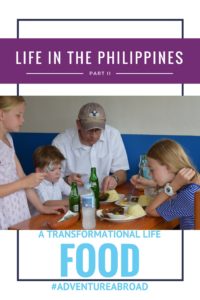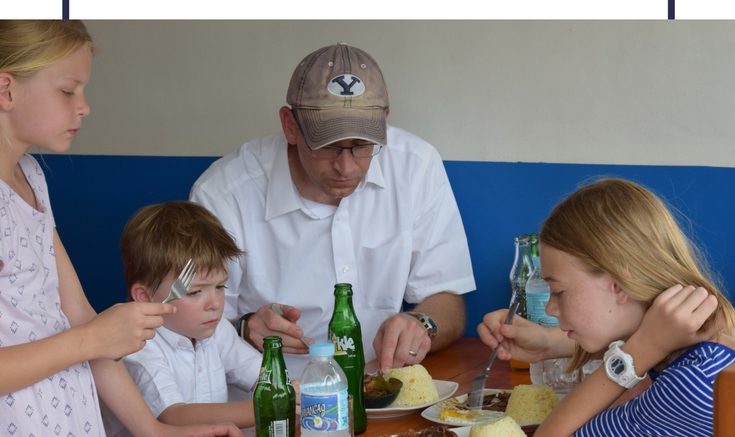Part II of Living in the Philippines is all about the unique food you will experience. Filipinos do not eat spicy food; it is mild and some might even say only lightly flavored. Rice, meat, and eggs are staples in a Filipino home. Rice is eaten for every meal and a meal is not complete without rice. We had a great time exploring the food culture in the Philippines.
SHOPPING FOR FOOD
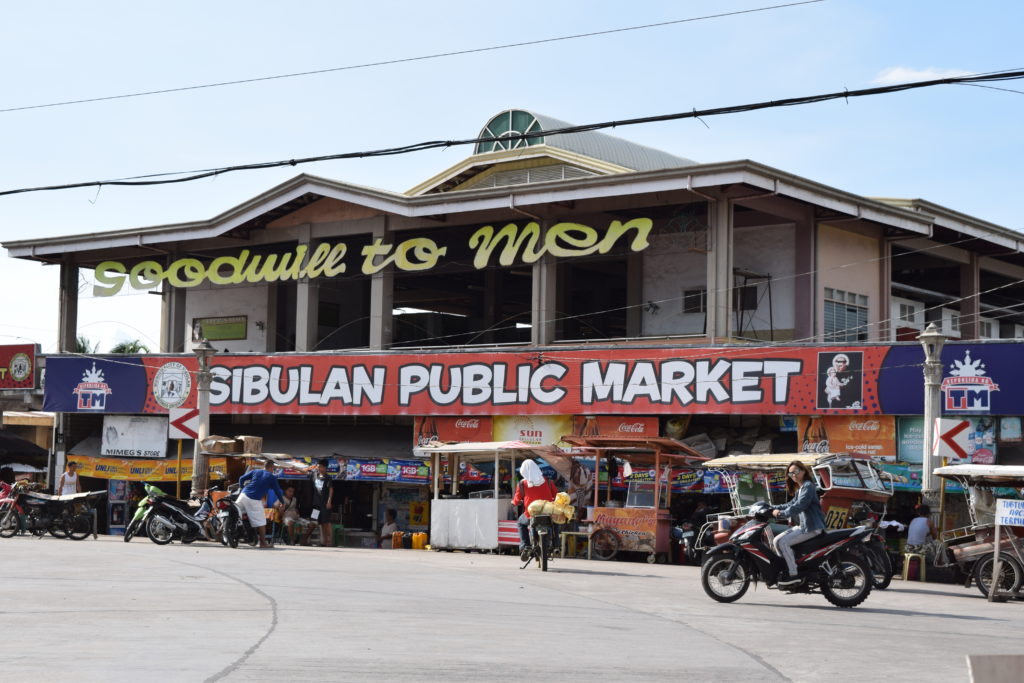
Public Markets are the best way and least expensive way to get local foods. Meats, eggs, rice, fish, vegetables, and fruits are all available for a good price. You can also find seasonings, oil,, Tang- a juice mix, canned food, laundry soap, hair and body soap, snacks, and lots of slippers or flip flops as well. It is a one stop shop for all the necessities. We purchased our meats mainly at the Supermarket because I couldn’t stomach the smell or the looks of it. We did however, purchase some fish and once I bought a chicken from the market I found in a cooler. Wash the vegetables well because the vegetables do not get much fresher than straight out of the ground. We brought along our Norwex fruit and vegetable cloth just for this purpose. The cloth lives up to its description and we recommend it. The market is exactly like a farmers market near you, but I have never been in markets with hanging meat and flies being shooed with wands made from torn plastic bags and a stick. That is different; and it is a wonderful cultural experience.
Supermarkets such as Hypermart and Robinsons are available in more populated areas. We would get a few western items from the Supermarkets; but never fruits and vegetables. The looks of those items in the supermarkets and the cost will make you want to go to the public market. Many of the imported goods are very expensive, as you would imagine. Some of the items are more than you would pay in the US. One item we got from the supermarket that you should try is Aroz Cald-O. It is a rice breakfast dish that has a chicken broth base. Mix in an egg or two with it and enjoy the deliciousness.
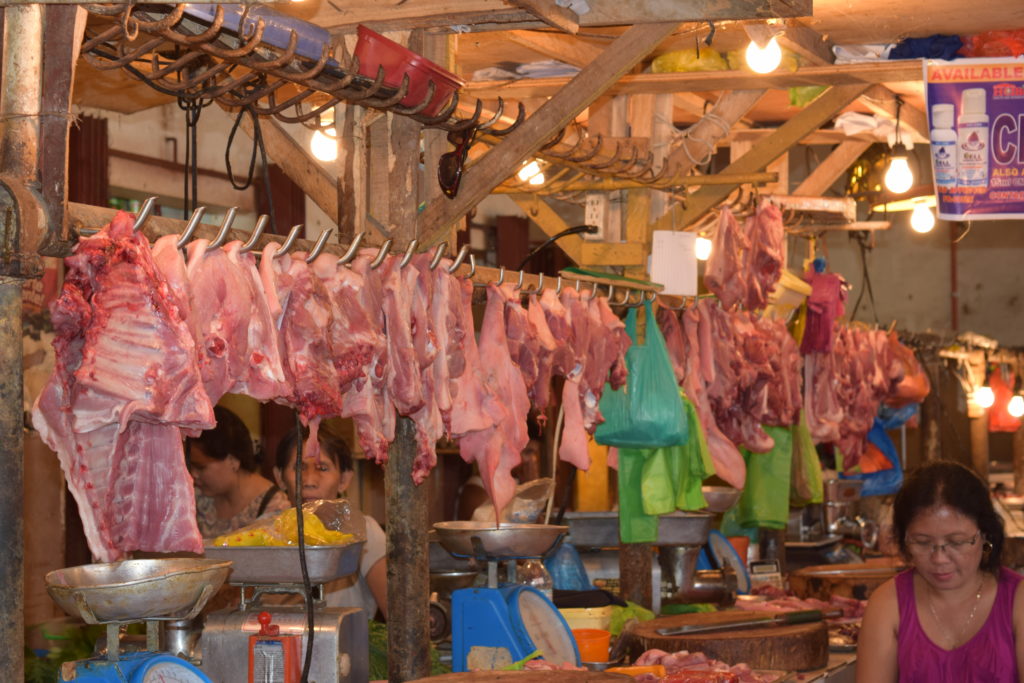
The meat counter at the grocery store was whole new experience for us as well. I will try to give you an image of what it is like. i am also giving this description from the perspective of a person who is terrified of germs, bacteria, and any unseen virus that could be lurking near me. Now the description: From far away it looks like an average meat cooler counter. As you get closer you realize that there is a strong smell, though not as bad as the public market smell. As you get closer you see that all the meat is in trays or buckets and not neatly packaged in a styrofoam tray covered in plastic. Hanging on the side glass of the cooler are the meat tongs used to pick up the meat. Then you see little children go up and start playing with the tongs and then proceed to touch everything else in the supermarket. The friendly meat counter workers get a plastic bag and set it on top of the meat while they place the the selected meat inside the bag. They tie the bag shut and you put the bacteria laden bag in the bottom of your basket or cart. After the first two experiences at the counter, I couldn’t take anymore. Jake had to be the one to get the meat. But, it is fresh and you know that the animals you are eating are eating from the land and not a farmers mixture of feed.
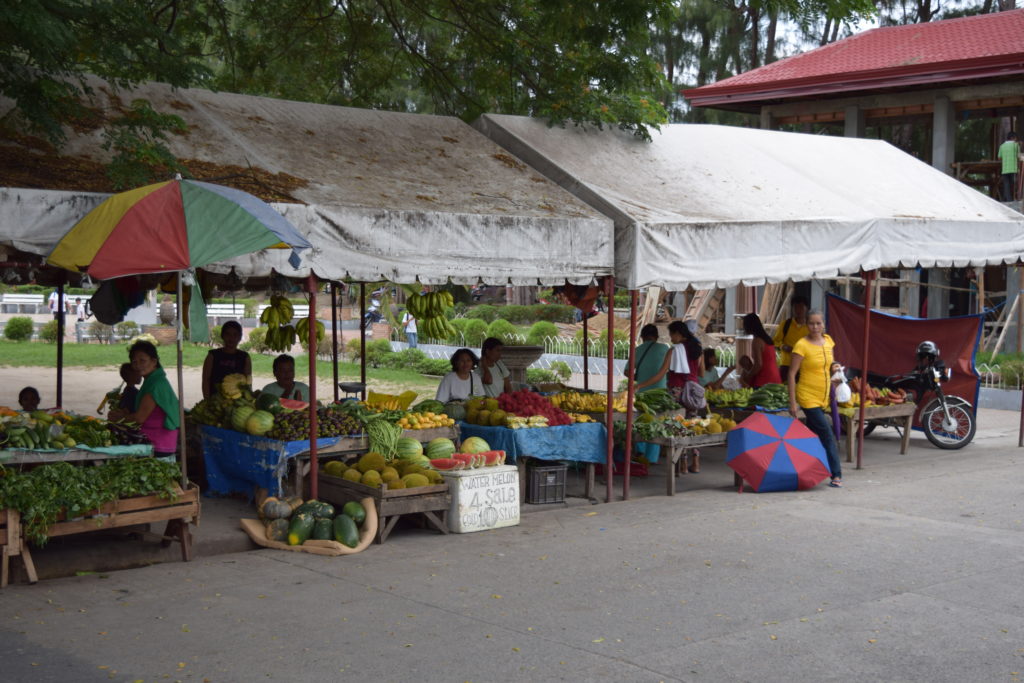 Our favorite way to get snacks and soda and water are from Sari Sari stores. These are slightly addicting and a favorite for the children. They really miss the sari sari stores now that we are in a different country. Just about every place you see along the road has a store front of some type. Bars are on the store front and you can see all the goodies inside. Generally, they all have the same items to purchase and all the prices are the same. No need to shop around for the best deal here, it’s all a good deal and it’s all the same price no matter who you buy from. In our neighborhood in Dumaguete we found a lot of town homes with store fronts. The children enjoyed see what each store had to purchase.
Our favorite way to get snacks and soda and water are from Sari Sari stores. These are slightly addicting and a favorite for the children. They really miss the sari sari stores now that we are in a different country. Just about every place you see along the road has a store front of some type. Bars are on the store front and you can see all the goodies inside. Generally, they all have the same items to purchase and all the prices are the same. No need to shop around for the best deal here, it’s all a good deal and it’s all the same price no matter who you buy from. In our neighborhood in Dumaguete we found a lot of town homes with store fronts. The children enjoyed see what each store had to purchase.
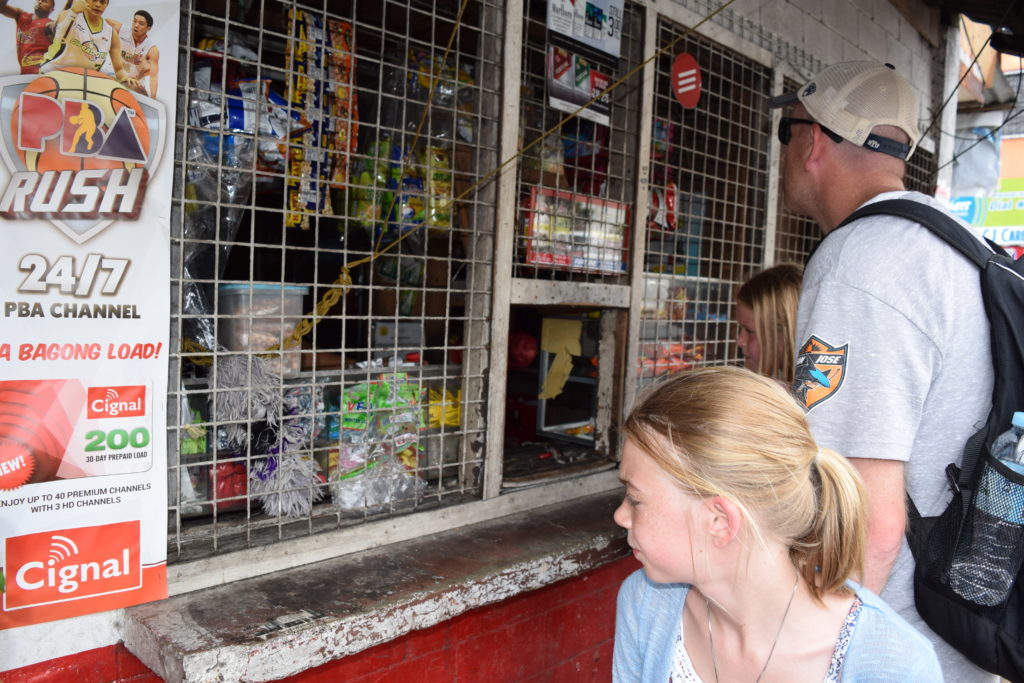
FOODS TO TRY
Our favorite snacks from the sari sari stores are Sky Flakes or Magic Flakes, Fita crackers which are similar to Ritz crackers, Cloud 9 candy bars, and Maxx candy. Maxx candy has an interesting history. During World War II the soldiers had Halls cough drops with them from the states. They wanted to give the children candy but they didn’t have much, so they would hand out Halls cough drops. Various brands emerged from Halls, including Maxx which seems to be the brand of choice now days. It tastes just like a Halls cough drop, but in the Philippines, it is candy. Another snack food item we enjoyed are Presto cookies, specifically the peanut butter kind. It tastes like a Nutter Butter, if you are from the states. There are some fun treats to try here, so splurge and buy ten new treats to try. It will cost around $2-3USD and for a few days you will have all sorts of new goodies to try.
The Filipinos do not have a taste for spicy food that typical Asian cultures have. Pork is their favorite meat while beef is not generally liked. When you order pork be mindful that they love the fat most from the pig, the meat portion will be small. Pork adobo is delicious if you get it from a place that really knows how to make it. We had a local make it for us, nothing else has compared. Chicken is very common as well in various dishes. Fish, mainly the bangus fish is a common dish for purchase. Silog dishes come with the meat, rice, and a sunny side up egg. Chop Suey is a great dish if you are wanting more vegetables in your diet. Filipino food is fantastic, but leaves off the vegetables which in my opinion would make the dish even better. Noodle dishes such as Pancit are available as well. We suggest ordering food to be made rather than the pre-made food from the street. Tocino is a marinade meat is put in and is really delicious and one of our favorites. It makes the meat taste like beef jerky, but a soft version of it.
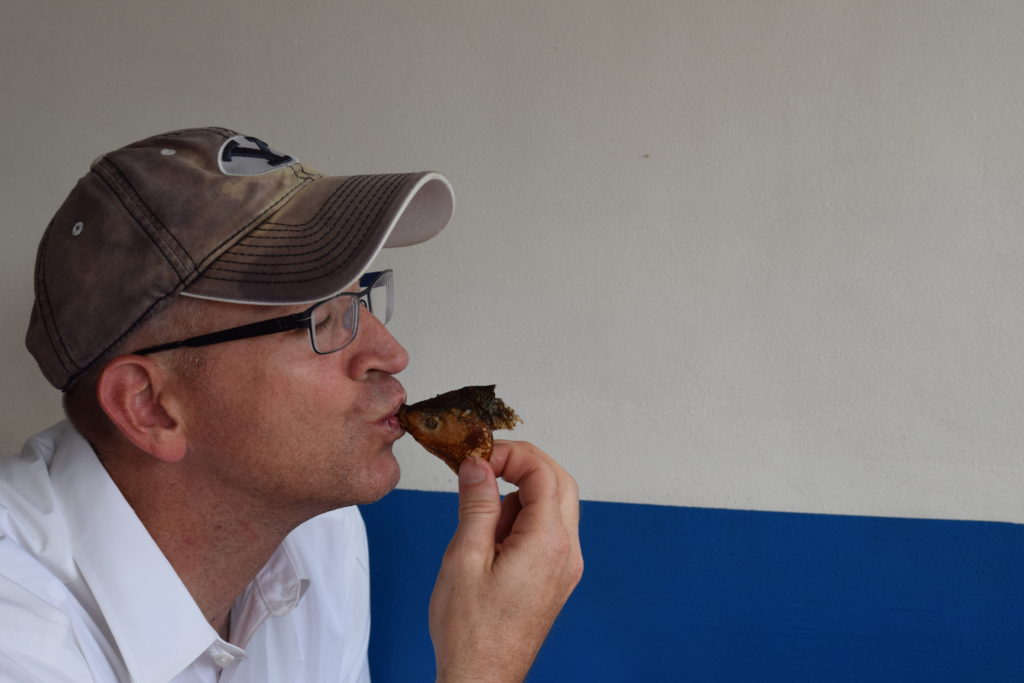
Mango and Buko shakes are fantastic, but make sure to order from a place that uses filtered water. Buko is coconut and is best when pieces of the flesh are in the shake. Water from the tap is not safe to drink. We even used filtered water to brush our teeth just to be safe. Bottled water can be bought for just a few pesos, large water jugs that you see from Arrowhead or Sparkletts can be bought for Php30, that’s less than $1. Clean water is easy to get; you will need a lot of here because of the heat and humidity. When cooking with the water we made sure it came to a boil before using it. When ordering water from a restaurant ask for filtered water, most have filtered water now. If getting ice ask whether it was made from filtered water or consume at your own risk.
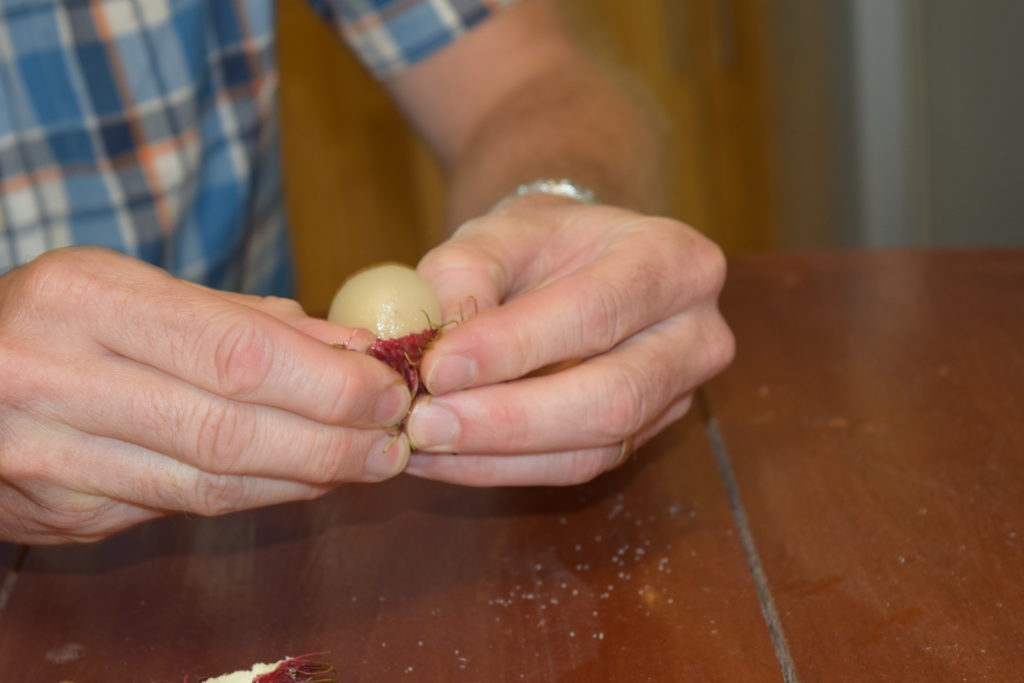
Fresh fruit grows everywhere. It is so fun to look for bananas in the bananas trees, papayas, and coconuts. Mangos are Jake’s favorite and he consumed a lot of mangos. He had missed their deliciousness since living in the Philippines eighteen years ago. Green bananas are absolutely delicious and my children’s favorite. There are green cooking bananas and are very different from the eating bananas. We always asked the seller what bananas were ripe to take home and eat. They won’t lead you astray. Durian is a popular fruit here, but we did not brave the strong scent enough to try it. Star fruit, dragon fruit, and pomelo are other fruits to give a try. Calamanci are a small citrusy fruit that is flavorful and great to add to rice or meat for flavor. Rambutan is a colorful and exotic looking fruit. They are everywhere along the side of the road for purchase. They are bright red in color and look like they have spiky points all over them. You peel the fruit and inside is a cream colored fruit similar to the texture of a large grape. There is a pit in the middle of the fruit. We all tried one but it wasn’t a favorite.
Vegetables are so fresh here. Even though most places you order food does not come with vegetables, they are available. The carrots are perfectly ripe and sweet. Onions, garlic, potatoes of various kinds, green beans, green onions, tomatoes, and chayote are some vegetables to try from the market.
Food is fun to explore throughout the Philippines. When eating out we would order four different dishes for the five of us to share. That way we could sample a variety of dishes to get an idea of what we like. It was a fun way to eat through the Philippines.
I saved the favorite from our six week travel for last: pan. The bakeries have some really great sweet bread as well as pan de sal. There are more types of bread than I ever knew existed. We loved getting a treat at the bakery while we were out or for an early morning breakfast when we were going to be traveling. It was such a highlight we had pan for our one month adventure abroad celebration!

You stuck around to vicariously eat your way through the Philippines! If you missed the first part of Living in the Philippines: Transportation and Housing you can read it here. Sign up for the newsletter so you don’t miss the last part of this series: Daily Life and Weather.
Do you have a favorite dish you’ve eaten while touring? We’d love to hear about it. If we go to the country it is from, we will try it.
Adventure On!
